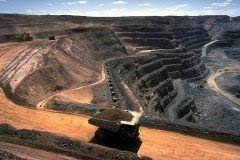E-waste or electronic waste is a term used for those electronic equipment that has reached its end of life in the hand of its current user. These devices when disassembled or destroyed are either taken for reuse or slated for hazardous disposal. Some of the electronic waste can be recycled and they are called as a "commodity" while those which cannot be reused is categorized as "waste".
E-Waste Market Size
The global market of electronic waste is estimated to be $7.2 billion in 2004 and it is predicted to increase at average annual growth rate of 8.8% till 2009 to $11 billion.
- Due to the rising demand of high value engineered plastics, the recycled plastics sector will register the maximum revenue growth. It will grow at 10.2% AAGR.
- The recycled metals market will continue to be dominated by the growth in metals mined from end of life electronic waste, growing at an AAGR of 8.1%.
- Recycled glass is low valued hence the recycled glass market continues to be stagnant. Glass cullets sold into the marketplace will continue to command modest prices.
- The cathode ray tube recovered from the old CRTs are vastly used in the new CRTs. The market demand for recovered cathode ray tube feedstock is growing and getting stronger. Due to this higher value glass-to-glass recycling the market will grow at an AAGR of 7.5%.
Reasons for Increasing E-Waste
Due to the increasing areas of information society and the dependency of businesses on computer and Internet, the e-waste has been mounting. Perhaps e-waste is the fastest growing segment of the municipal solid waste stream. E-waste has been mounting rapidly with the rise of the information society. In developed countries, e-waste constitutes 1% of solid waste but it is expected to grow to 2% by 2010. In developing countries, the percentage of e-waste out of solid waste ranges from 0.01% to 1%. But in recent future, the developing countries including, China will be the fastest growing segment of the e-waste market. Over the next five years, the electronic waste in developing countries has the potential to triple the amount at current.The rising mount of electronic waste isn't going to be cut recently. Computer sales are growing at a rate of 10% worldwide and sale of DVD players are doubling every year. Along with that the rate of obsolescence of electronic equipment is increasing. The life-cycle of the electrical and electronic equipment are shortening. The life period of a television set is reduced to 10 years while that of a computer remains only 2-3 years. All the above mentioned facts are equally responsible for the rising e-waste. In spite of such horrendous situation manufacturers and governments have not kept pace with electronic waste policy and practice. Eventually a high percentage of electronics are ending up in the waste stream releasing harmful toxins into the environment.
New technologies are now arising, polymers are helping easier management of e-wastes!








